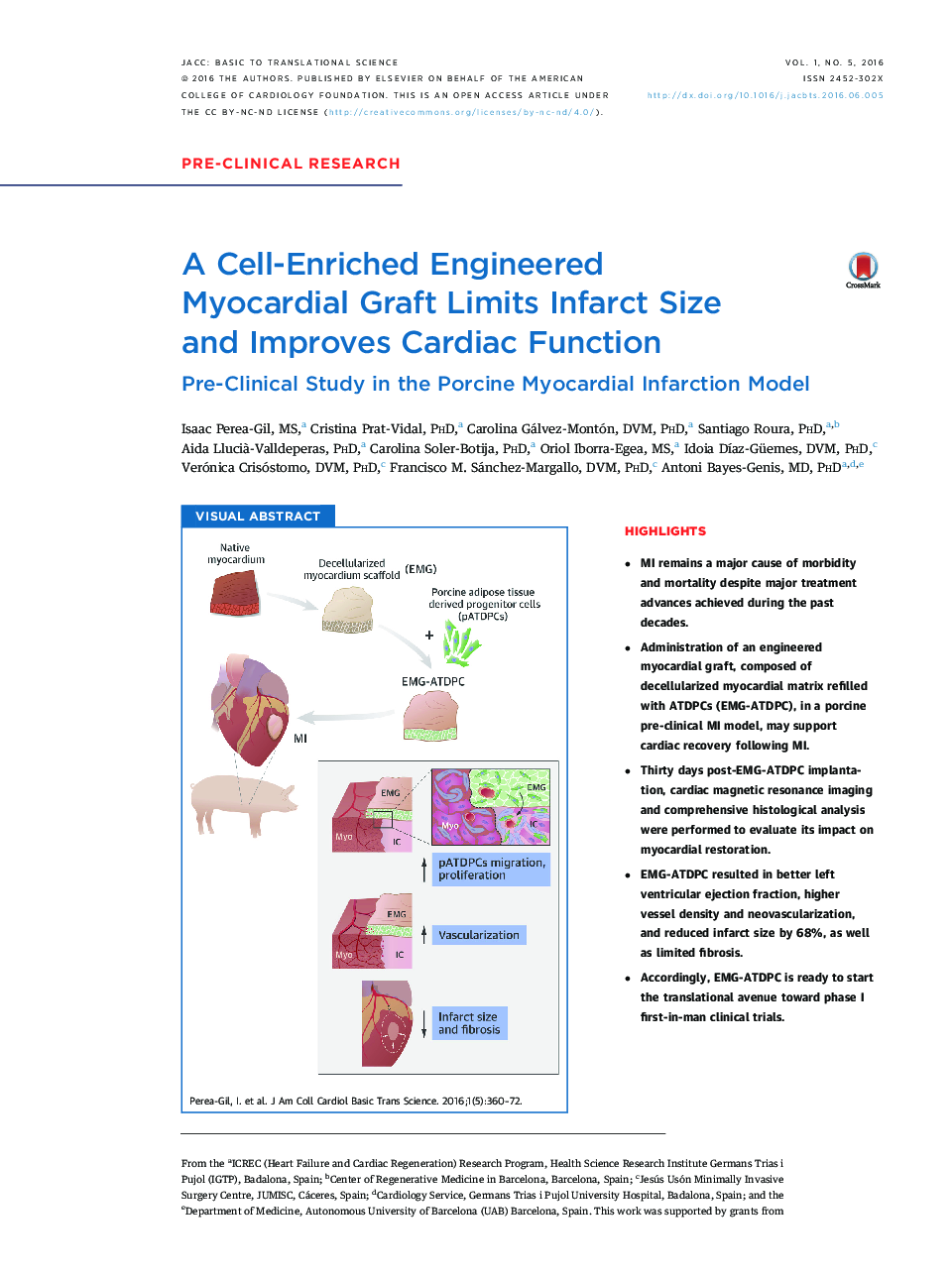| Article ID | Journal | Published Year | Pages | File Type |
|---|---|---|---|---|
| 2937539 | JACC: Basic to Translational Science | 2016 | 13 Pages |
•MI remains a major cause of morbidity and mortality despite major treatment advances achieved during the past decades.•Administration of an engineered myocardial graft, composed of decellularized myocardial matrix refilled with ATDPCs (EMG-ATDPC), in a porcine pre-clinical MI model, may support cardiac recovery following MI.•Thirty days post-EMG-ATDPC implantation, cardiac magnetic resonance imaging and comprehensive histological analysis were performed to evaluate its impact on myocardial restoration.•EMG-ATDPC resulted in better left ventricular ejection fraction, higher vessel density and neovascularization, and reduced infarct size by 68%, as well as limited fibrosis.•Accordingly, EMG-ATDPC is ready to start the translational avenue toward phase I first-in-man clinical trials.
SummaryMyocardial infarction (MI) remains a dreadful disease around the world, causing irreversible sequelae that shorten life expectancy and reduce quality of life despite current treatment. Here, the authors engineered a cell-enriched myocardial graft, composed of a decellularized myocardial matrix refilled with adipose tissue-derived progenitor cells (EMG-ATDPC). Once applied over the infarcted area in the swine MI model, the EMG-ATDPC improved cardiac function, reduced infarct size, attenuated fibrosis progression, and promoted neovascularization of the ischemic myocardium. The beneficial effects exerted by the EMG-ATDPC and the absence of identified adverse side effects should facilitate its clinical translation as a novel MI therapy in humans.
Visual AbstractFigure optionsDownload full-size imageDownload high-quality image (929 K)Download as PowerPoint slide
